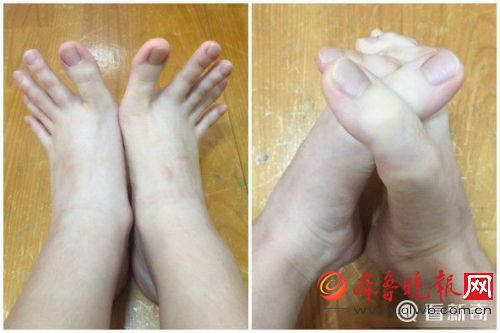

DURBAN,July 18 (Xinhua) -- Multiple studies revealed on Monday at the 21st International AIDS Conference provide new insights that will help shape future HIV prevention and treatment efforts for women and girls.
The results were announced at an official press briefing on the sidelines of the conference.
Three studies by the Centre for the AIDS Program of Research in South Africa (CAPRISA) provide new evidence on the factors that contribute to high rates of HIV infection in young women in South Africa.
A new analysis of the landmark ASPIRE vaginal ring study reveals high levels of HIV protection among women who consistently used the intervention.
A series of studies from the PROMISE trials provides encouraging data on options for preventing mother-to-child HIV transmission during extended breastfeeding, but also raises concerns about treatment adherence and acceptance among HIV-positive women who had recently given birth.
Another study shows high efficacy and safety of a simplified, fixed-dose combination regimen for treatment-na ve women.
"These new insights pave the way to develop new prevention and treatment approaches that will protect the health of women, girls, and newborns," said Chris Beyrer, AIDS 2016 International Chair and President of the International AIDS Society.
"With women accounting for the majority of adults living with HIV in sub-Saharan Africa, and new infections among young women double that of young men in the region, it has never been more critical to address this vital issue,"Beyrer said.
Commenting specifically on the CAPRISA studies discussed in the press briefing, Salim S. Abdool Karim, Director of CAPRISA, said: "Reducing new HIV infections in young women is one of the greatest challenges in Africa. Based on our results, implementing targeted prevention interventions to break the cycle of HIV transmission while effectively treating bacterial vaginosis could reverse the devastating impact of the HIV epidemic in young people in Africa."
Research results also showed that age-disparate sex and specific vaginal bacteria increase HIV risk among young women in South Africa: Three CAPRISA-led studies sought to explain why young women in South Africa have high rates of HIV.
One of the studies analysed the genetic HIV code from 1,589 HIV-positive people to better understand the persistent spread of HIV in a rural and an urban community in South Africa.
It revealed a cycle of HIV transmission driven by high rates of new HIV infections in adolescent girls and young women from men, who were on average eight years older. Many of these men were also partners of similarly aged women, among whom HIV prevalence exceeds 60 percent.
Two additional studies investigated the role of vaginal bacteria in HIV risk. One examined the vaginal bacteria of 120 women, and found that those with an overgrowth of Prevotella bivia had an almost 20 times higher chance of acquiring HIV than those with low levels or absence of this vaginal bacterium.
The other study analysed 3,334 genital bacterial proteins from 688 women, which showed that three out of five women who had "healthy" (lactobacillus-dominant) vaginal bacteria benefited from tenofovir gel pre-exposure prophylaxis; the other women did not.
Follow-up laboratory studies showed that the vaginal bacteria Gardenerella vaginalis, which predominates in the vagina when lactobacillus is not dominant, absorbs tenofovir thereby reducing its availability in the genital tract to prevent HIV infection.
 "Straddling bus" starts production in east China
"Straddling bus" starts production in east China Girl goes viral for finger-long toes
Girl goes viral for finger-long toes Five made-in-China hi-tech breakthroughs
Five made-in-China hi-tech breakthroughs HK-Zhuhai-Macao Bridge to open to traffic
HK-Zhuhai-Macao Bridge to open to traffic China opens its first combined transport service to Nepal
China opens its first combined transport service to Nepal Students take stylish bikini graduations photos
Students take stylish bikini graduations photos Charming dancing students pose for graduation photos
Charming dancing students pose for graduation photos Guizhou, Yunnan section of Shanghai-Kunming railway connected
Guizhou, Yunnan section of Shanghai-Kunming railway connected Naked models transformed into landscapes, birds and even DRAGONS by body painting artist
Naked models transformed into landscapes, birds and even DRAGONS by body painting artist Top 10 livable Chinese cities
Top 10 livable Chinese cities Top 20 hottest women in the world in 2014
Top 20 hottest women in the world in 2014 Top 10 hardest languages to learn
Top 10 hardest languages to learn China’s Top 10 Unique Bridges, Highways and Roads
China’s Top 10 Unique Bridges, Highways and Roads Turkey instability might cause ripple effect
Turkey instability might cause ripple effect As millions are relocated to towns, some find it hard to abandon rural life
As millions are relocated to towns, some find it hard to abandon rural life Former TV host spends 15 years documenting troupe of blind musicians
Former TV host spends 15 years documenting troupe of blind musicians Affordable international schools make their way into second- and third-tier cities
Affordable international schools make their way into second- and third-tier citiesDay|Week